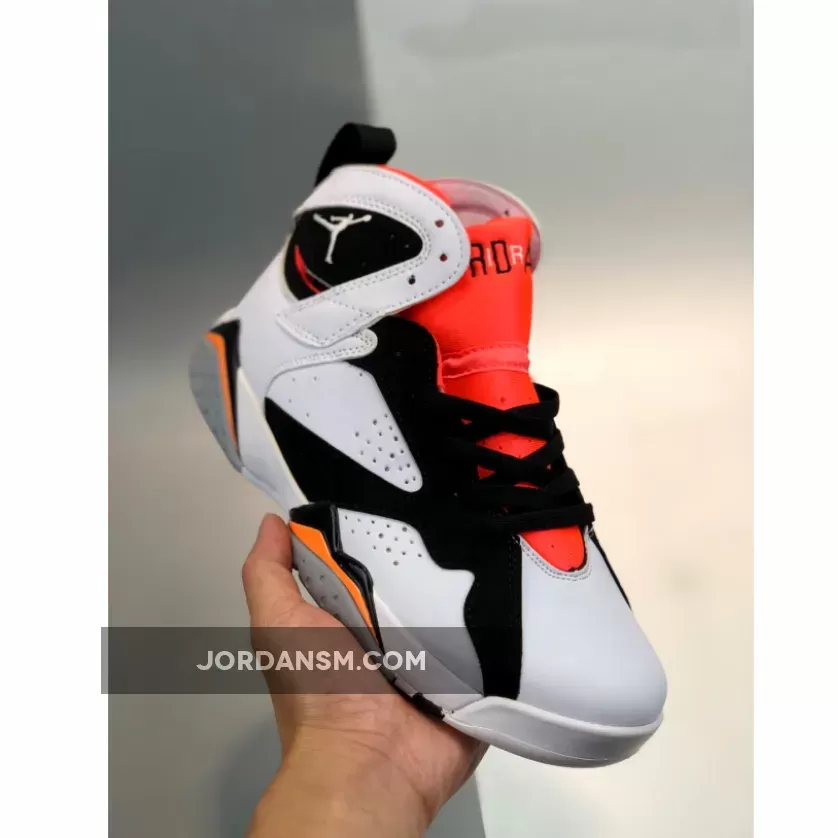The Air Jordan VII. A name that conjures images of on-court dominance, groundbreaking design, and a cultural impact that resonates even today, decades after its initial debut. While the simple question of its age might seem straightforward – 1992, the year of its birth – a deeper exploration reveals a rich tapestry of design innovations, cultural significance, and lasting influence on sneaker history. This isn’t just about a shoe; it’s about understanding a pivotal moment in sneaker culture and the enduring appeal of a design that defied expectations.
The year was 1992. Michael Jordan was at the height of his powers, leading the Chicago Bulls to their second NBA Championship. This was a period of unparalleled athletic achievement, and the Air Jordan VII, designed by the legendary Tinker Hatfield, was the perfect embodiment of that era’s energy and innovation. Hatfield, renowned for his groundbreaking designs within the Air Jordan lineage, took a bold step with the VII. He consciously moved away from the visible Air unit in the heel, a hallmark of many of its predecessors. This seemingly small change was significant, representing a shift in design philosophy and a desire to explore new aesthetics within the iconic silhouette.
The absence of the visible Air unit wasn’t a mere omission; it was a deliberate design choice that reflected a maturing design language. The shoe, while still undeniably an Air Jordan, possessed a sleeker, more streamlined profile. The “Nike Air” logo, a constant fixture on previous models, was also subtly altered, showcasing a shift in branding priorities and a subtle nod towards a more minimalist aesthetic. This design decision helped establish the Jordan VII as a distinct entity within the Air Jordan family, demonstrating a willingness to evolve and experiment, rather than simply reiterating past successes.
But the innovative design was only one part of the story. The Air Jordan VII became inextricably linked to Michael Jordan’s legendary performance on the court. These were the shoes he wore during his iconic “Dream Team” performance at the 1992 Barcelona Olympics, a moment that transcended basketball and cemented the Air Jordan VII’s place in history. Images of Jordan soaring through the air, showcasing his unmatched athleticism while wearing the VII, became instantly iconic and helped propel the shoe to unprecedented levels of popularity. It wasn’t just a sneaker; it was a symbol of athletic excellence, teamwork, and global triumph.
The legacy of the Air Jordan VII extends far beyond the basketball court. Its impact on streetwear culture and sneaker design is undeniable. The shoe’s unique design elements, from its streamlined silhouette to its distinctive colorways, have inspired countless designers and continue to influence contemporary sneaker aesthetics. The retro releases of the Air Jordan VII, often featuring updated materials and color palettes, have consistently proven to be highly sought-after items among sneaker enthusiasts, highlighting the shoe’s enduring popularity and timeless design.
The diverse range of colorways available for the Air Jordan VII further underscores its enduring appeal. From the classic “Bordeaux” and “Olympic” editions to the more modern and vibrant iterations, the shoe has offered something for every taste and preference. The “Pink and White” version, for example, showcases the shoe’s versatility and ability to adapt to different aesthetics, demonstrating that the Air Jordan VII is more than just a basketball shoe; it’s a style statement. The availability of kids’ sizes, preschool sizes, and adult sizes speaks to its timeless appeal across age groups. The existence of various resale options, often seen as “Jordan 7 for sale” online, further emphasizes the continuous demand and the shoe’s status as a valuable collector’s item.
The “Hot Lava” Air Jordan 4, while not directly a Jordan 7, offers a fascinating comparison. Both shoes, representing different eras within the Air Jordan line, share a similar dedication to bold design choices and captivating color palettes. The vibrant “Hot Lava” colorway, a striking blend of orange and red hues, reflects the same energy and boldness that defined the Air Jordan VII’s design philosophy. The comparison highlights the evolution of design within the Air Jordan brand, demonstrating a consistent commitment to pushing boundaries and creating visually arresting footwear. Similarly, the “White and Black” Jordan 7 exemplifies the shoe’s ability to blend classic aesthetics with a modern sensibility, solidifying its position as a timeless classic.
In conclusion, the Air Jordan VII is more than just a 1992 sneaker; it’s a cultural icon, a testament to innovative design, and a lasting symbol of athletic achievement. Its influence on sneaker culture continues to this day, proving that exceptional design transcends time and trends. Whether you’re admiring the original release, searching for a retro pair, or simply appreciating its lasting impact, the Air Jordan VII remains a significant piece of sneaker history and a powerful testament to the enduring legacy of Michael Jordan and Tinker Hatfield’s creative collaboration. The shoe’s ongoing popularity, evident in the frequent searches for “Jordan 7 kids,” “Jordan 7 preschool,” and various colorway variations, underscores its enduring appeal and its continued relevance in today’s sneaker landscape.
 Buy From: Air Jordan 7 White/Black-Hot Lava / jordan 7 hot lava
Buy From: Air Jordan 7 White/Black-Hot Lava / jordan 7 hot lava